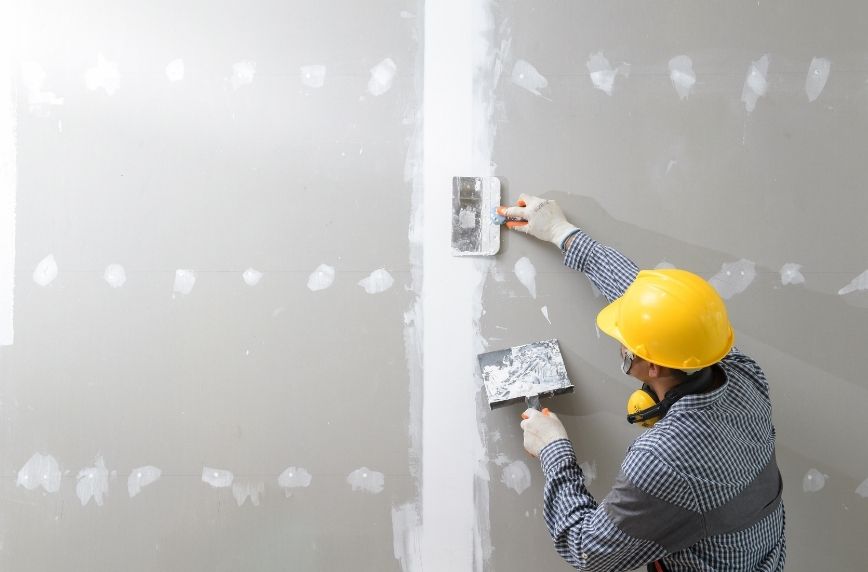Drywall is something we all have inside our homes. But strangely, not many of us know much about it. If you’re curious, then continue reading to learn the top five things you need to know about drywall, including how to install it.
What Is Drywall?
Drywall is a panel made of gypsum (a sulfate mineral that’s a component in plaster, chalk, fertilizer, and more) and thick facer and backer paper. It covers a home’s inner structural work and forms walls and ceilings.
Are Drywall and Sheetrock the Same Thing?
Drywall goes by many names, including plasterboard, wallboard, sheetrock, gypsum board, buster board, and custard board. We could go on and on. All these names refer to the same thing—the material we use to make interior walls and ceilings.
How Do You Choose the Right Drywall for Your Home?
Drywall comes in various thicknesses. It also comes in an array of types. Regular drywall is in most residential and commercial spaces, but mold-resistant, soundproof, fire-resistant, and VOC-absorbing drywall are some other common variations.
Mold-Resistant Drywall
This type is ideal for bathrooms and kitchens. It has a thicker backing and a wax coating to resist moisture.
Soundproof Drywall
This type contains extra gypsum, wood fibers, and polymers to increase sound absorption. It’s great for people who want quiet.
Fire-Resistant Drywall
This type is common in garages and basements. It contains fiberglass, which burns much slower than gypsum.
VOC-Absorbing Drywall
This type traps volatile organic compounds (harmful chemicals found inside cleaners and paint) and renders them inert.
How Do You Install Drywall?
Installing drywall is easy enough that most DIYers can handle the task. So how do you install drywall? Safety comes first in drywall installation, so don’t forget to wear a dust mask, a pair of thick gloves, and safety glasses. Begin by measuring the drywall with a tape measure and cutting it about a quarter-inch shorter than your desired measurement. Hold it up to the wall and drive screws into the middle of the sheet with a drill. Then, drive screws around the outside of the panel. Finally, cover the seams with tape.
It's as simple as that—though, of course, the pros have a few tricks up their sleeve for making the drywall look and function better. So it’s best to hire a professional contractor when you can.
When Can You Paint Drywall?
You need to prime your drywall before you can paint it. Sand, vacuum, and wash your drywall, and once it dries, apply a latex primer. Oil primers will raise the grain of the drywall and make your paint job look sloppy, so avoid them if you can. Once you've applied sufficient coats and the walls are completely dry, you can paint to your heart's content.
There you have it; these are the top five things you need to know about drywall. We hope this article has given you a better understanding of this fundamental material. You can go forth with your newfound knowledge to help you if you must work with drywall in any way.
Are You a Professional?
Requests for your services are coming in left and right. Let’s connect and grow your business, together.


